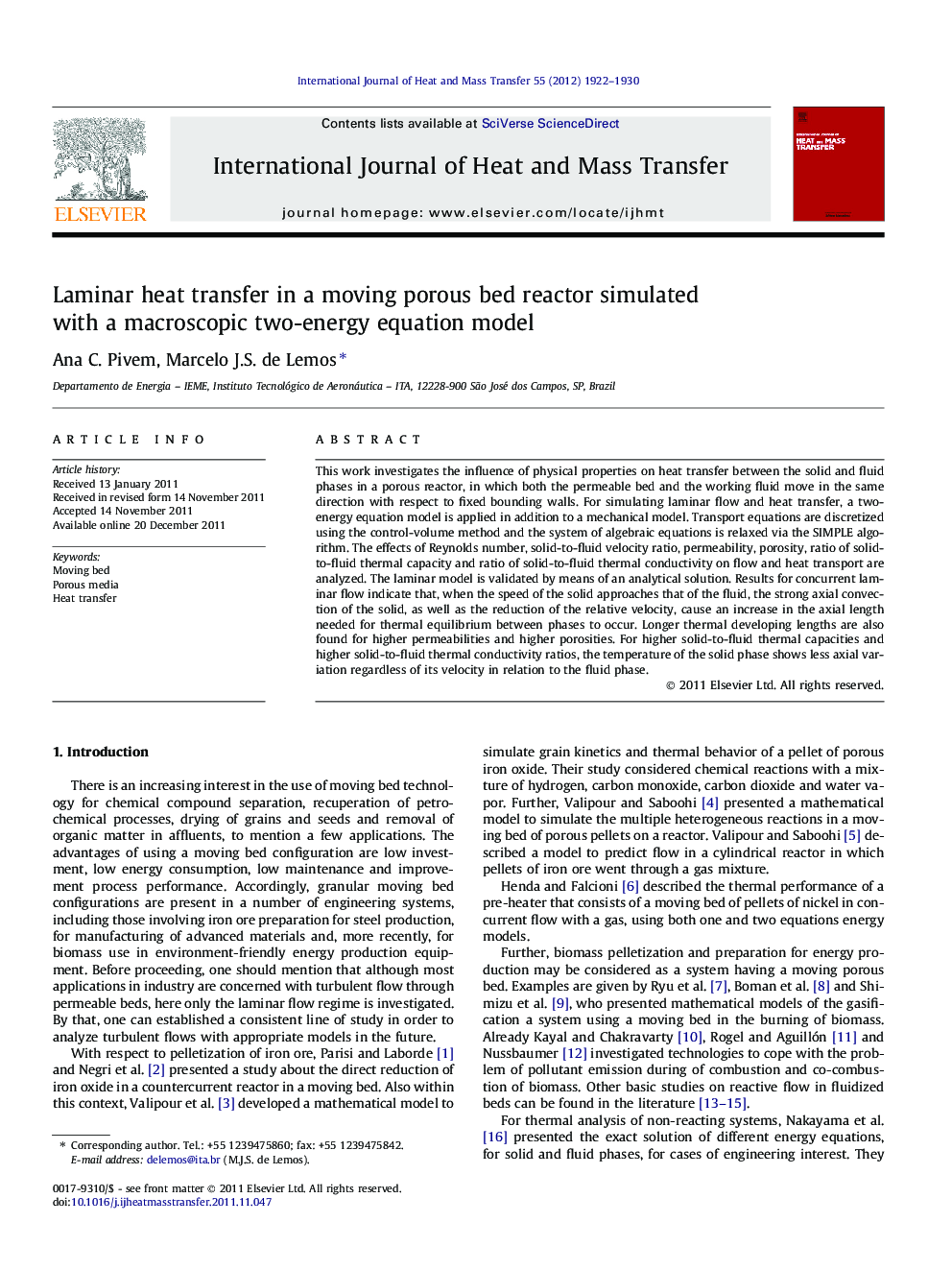| Article ID | Journal | Published Year | Pages | File Type |
|---|---|---|---|---|
| 659421 | International Journal of Heat and Mass Transfer | 2012 | 9 Pages |
This work investigates the influence of physical properties on heat transfer between the solid and fluid phases in a porous reactor, in which both the permeable bed and the working fluid move in the same direction with respect to fixed bounding walls. For simulating laminar flow and heat transfer, a two-energy equation model is applied in addition to a mechanical model. Transport equations are discretized using the control-volume method and the system of algebraic equations is relaxed via the SIMPLE algorithm. The effects of Reynolds number, solid-to-fluid velocity ratio, permeability, porosity, ratio of solid-to-fluid thermal capacity and ratio of solid-to-fluid thermal conductivity on flow and heat transport are analyzed. The laminar model is validated by means of an analytical solution. Results for concurrent laminar flow indicate that, when the speed of the solid approaches that of the fluid, the strong axial convection of the solid, as well as the reduction of the relative velocity, cause an increase in the axial length needed for thermal equilibrium between phases to occur. Longer thermal developing lengths are also found for higher permeabilities and higher porosities. For higher solid-to-fluid thermal capacities and higher solid-to-fluid thermal conductivity ratios, the temperature of the solid phase shows less axial variation regardless of its velocity in relation to the fluid phase.
